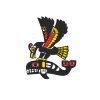Robert Barron, Cowichan Valley Citizen, May 27, 2016
Unlike much of the rest of Vancouver Island, the Cowichan region is already experiencing drought conditions.
As of the middle of May, the region is at Level 3, or “very dry”, drought conditions, according to an analysis conducted by the Cowichan Valley Regional District.
The analysis, prepared by environmental analyst Jeff Moore, said the conclusions are the result of a number of indicators.
They include the fact that the snow pack on Heather Mountain, located in the Cowichan River watershed, was estimated to be about eight per cent of its normal level on May 16, and is continuing to diminish rapidly.
As well, maps produced by Agriculture and Agri-Food Canada show that for the eastern portion of the Cowichan region rainfall over the last two months is below 40 per cent of normal.
“Looking at specific weather stations, we see that for the month of April, North Cowichan was at 22.3 per cent of normal rainfall, Shawnigan Lake was at 23.7 per cent of normal and Lake Cowichan was at 33.8 per cent of normal,” Moore said in the report.
In addition to the core indicators of snow pack and rainfall, the current status of local aquifers also points to a high drought level in the region.
The Cobble Hill observation well is at the lowest recorded level for this time of year, the Chemainus observation well is close to the minimum on record and the observation well at Yellowpoint is close to its historical minimum.
Moore pointed out that, at the same time, as people begin watering their lawns and gardens for the season, water use across all the regional district’s water systems was up 35 per cent as of May 13 compared to the previous week, and was 20 per cent higher than at the same time last year.
“The hot, dry weather in April has led to a potentially serious combination of drought conditions and increased water use, which will have social, economic and ecological implications for valley residents if these conditions continue throughout the summer,” he said.
“Currently, no budget or staff resources have been set aside in 2016 to develop focused drought-management programs or specialized communications.”
Jon Lefebure, co-chairman of the Cowichan Water Board, said there is still hope that there will be enough rainfall during the spring to offset fears of another drought.
He said that when it rains in Duncan and Chemainus, it typically rains five times as much on the west end of Cowichan Lake which feeds many of the water systems in the region.
“We’re all hoping for that, but people are encouraged to check the Cowichan Water Board’s website for updates on the region’s water situation as the season progresses,” Lefebure said.
 Email
Email



